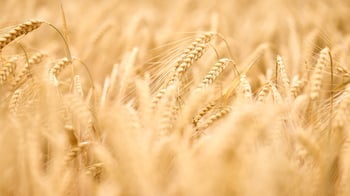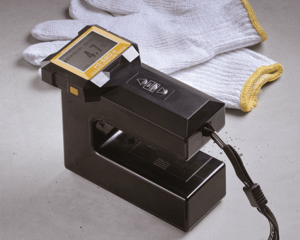 Have you heard about the acronym FAT TOM? It’s shorthand for those in the food production and food-grade crop industries and refers to the factors and conditions that allow bacteria and other contaminants to grow, which can lead to food spoilage.
Have you heard about the acronym FAT TOM? It’s shorthand for those in the food production and food-grade crop industries and refers to the factors and conditions that allow bacteria and other contaminants to grow, which can lead to food spoilage.
What does FAT TOM stand for?
- Food
- Acidity
- Time
- Temperature
- Oxygen
- Moisture
When growing crops like barley, conditions are prime for bacterial growth that can lead to financially devastating spoilage. While some of these factors are beyond the control of growers, moisture is one element that can be carefully monitored to avoid conditions that can spoil an entire harvest.
Here’s how moisture can impact your barley crop — and why it matters so much.
Barley, Harvest Time, and Ideal Moisture Levels
No matter what kind of crop, maintaining high-quality grain is all about the correct harvesting, grain management, and crop storage once it has been removed from the field. When should barley be harvested? At what moisture level can barley be safely stored or primed to capture the best price at the market?
The easiest solution for harvesting barley is to wait until the grain is fully ripened and reaches a moisture content level of 12% or less. When growers can harvest barley at this moisture content level, it can be directly delivered for storage or sale. When the crop is ripe, it’s a good idea to harvest as soon as possible to avoid field losses from wind or weathering.
This process is referred to as direct heading, and it’s definitely the most cost-effective method to harvest barley. The problem? There can be long periods of high humidity or heavy rains in which the harvesting of truly dry barley just isn’t possible. This can lead to all kinds of delay and field losses, and even grain discoloration from summer rain.
On the other hand, when growers wait too long to harvest their barley crops, there can be just as many challenges. When the moisture level dips below 10%, the barley becomes susceptible to skinning, when the husk is loosened or removed.
Skinned and broken barley kernels caused by over-drying and over-threshing can bring a much lower cost at the market, especially for malting barley. This is because skinned barley absorbs moisture faster than in-tact kernels, which can lead to the death of the grain. For brewers who use barley, this means a lower alcohol yield (and therefore lower profits for them). Because of this, overdried barley can result in a lower selling price for growers at the market.
Essentially, too much moisture and barley can spoil. Too little moisture and farmers can’t get the best price.
What Happens When Barley Needs to Be Harvested at Other Moisture Levels?
Not every growing season will allow farmers to harvest barley under perfect conditions. When this happens, growers need to monitor moisture levels and account for current conditions. Often, this involves early harvesting and drying.
Barley reaches full maturity at approximately 35% seed moisture, but it is by no means ready to harvest at this point. At 20% to 30% moisture, growers can swath their barley crops to allow them to dry before combining. Swathing, also called wind-rowing, refers to speeding up the grain drying process by cutting the crop when it reaches maturity, bundling it into swaths, and allowing it to dry before harvesting.
Additionally, to limit harvesting delays, barley can be direct-harvested at moisture levels above 12%. This moist grain needs to go through aeration to maintain quality or pass through a grain dryer to reduce moisture levels to where crops can be safely stored. Either way, this comes with a cost.
Malting barley can be harvested when the moisture levels reach 18%. At higher moisture levels, it can be a challenge for harvesters to thresh barley grain from the head. Taking aeration, drying costs, and other practicalities into consideration, the optimum moisture content for harvesting barley is around 14% to 15%.
From swathing at 35% moisture to harvesting anywhere between 12% to 15% moisture and then selling or storing barley, being in tune with the moisture content is crucial at each step of the process. In the field, the PM650 Advanced Portable Grain and Seed Moisture Meter offers accurate moisture readings without the time needed to husk and grind samples. This can reduce the overall time it takes to complete multiple test cycles of samples collected in various locations throughout the field.
 For fast, large samples, the PQ520 Single Kernel Wheat, Barley, and Rice Moisture Meter offers fast, continuous moisture measurement, determining the moisture distribution of a large sample in minutes, and can process a 300 kernel set in only two minutes. This can give growers an idea of how moisture is distributed across a sample gathered from multiple points in the field.
For fast, large samples, the PQ520 Single Kernel Wheat, Barley, and Rice Moisture Meter offers fast, continuous moisture measurement, determining the moisture distribution of a large sample in minutes, and can process a 300 kernel set in only two minutes. This can give growers an idea of how moisture is distributed across a sample gathered from multiple points in the field.
Kett has the laboratory-grade test instruments you need to manage your barley crop from swath to storage or market. If you want to learn more about the instruments we offer that can guide you through harvest, contact our experts today!


